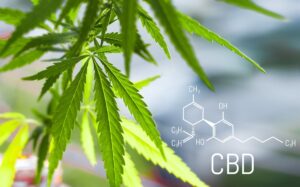
HIstory of Plant Medicine
The use of medicinal plants dates back to the Paleolithic age, approximately 60,000 years ago. Written evidence of herbal remedies dates back over 5,000 years to the Sumerians. There is evidence of Cannabis used as medicine in Ancient China, Greece, Egypt, Netherlands and India.
What are cannabinoids?
Cannabinoids are a class of chemicals produced in plants and animals. They are called endogenous cannabinoids or endocannabinoids If they are produced in animals. If the cannabinoids are produced in plants they are called phytocannabinoids. The Cannabis plant can produce over 100 different types of phytocannabinoids. THC (tetrahydrocannabinol) and CBD (cannabidiol) are found to be the most dominant phytocannabinoids in Cannabis.
What are terpenes?
Terpenes are organic compounds that can be found in cannabis and many other plants (more on that in a second). There are around 20,000 terpenes in total, though only a fraction of these are present in the cannabis plant — most estimates suggest it has around 100 terpenes, though some experts believe that it could contain 200 or more.
In both cannabis and other plants, terpenes serve a wide range of roles, but their biggest impact can be detected in the plant’s taste and scent. For this reason, terpenes are often the primary component in various essential oils derived from these plants. So if you’re a fan of aromatherapy, you’re already intimately familiar with terpenes, even if you don’t know them by name,
How do Cannabinoids and Terpenes Compare to Each Other?
THC and CBD are just two of over 100 cannabinoids found in cannabis, however they are the two most abundant cannabinoids and the most well studied. Both cannabinoids and terpenes can give you some clues about what to expect from a cannabis product, but they’re two different compounds.
That said, they all appear to interact with each other in what experts call the “entourage effect.”This is the hypothesis that the “full spectrum” of cannabis, including all the cannabinoids, terpenes, and other compounds found in cannabis, work synergistically to produce the sensations and effects of cannabis.
In other words, it’s a hypothesis that a little bit of everything might have more benefit than a lot of one thing.
A 2010 studyTrusted Source, for example, showed that a combination of CBD and THC was more effective for pain management than THC alone.
In a 2018 studyTrusted Source, breast cancer tumors in a Petri dish responded better to a cannabis extract than pure THC on its own. But those synergistic effects were believed to be mainly attributed to other cannabinoids and not terpenes.
This is important to consider if you’re using CBD for therapeutic purposes. If you use a CBD isolate (a product that contains only CBD) and find it doesn’t have your desired effect, it might be worth trying a full-spectrum CBD product, which will also contain terpenes and other cannabinoids, including small amounts of THC.
Featured Article:
More Research Articles:
- All
- Emerald Conference
- Health & Wellness
- Industry
- Products

Making evidence go further: Advancing synergy between agent – based modeling and randomized control trials

Increasing the Varieties of Marijuana and Marijuana products for Research

Journal of Drug Policy Analysis

Report on Cannabidiol: Considerations for use in wellness and in treatment of specific illness

The Dosing ProjectTM Proof of Concept Phase

Society of General Internal Medicine – Medical Marijuana

Radicle Aces (Advancing CBD Education & Science)

Artificial Intelligence For Craft Cannabis

Solving Cannabis Consistency

